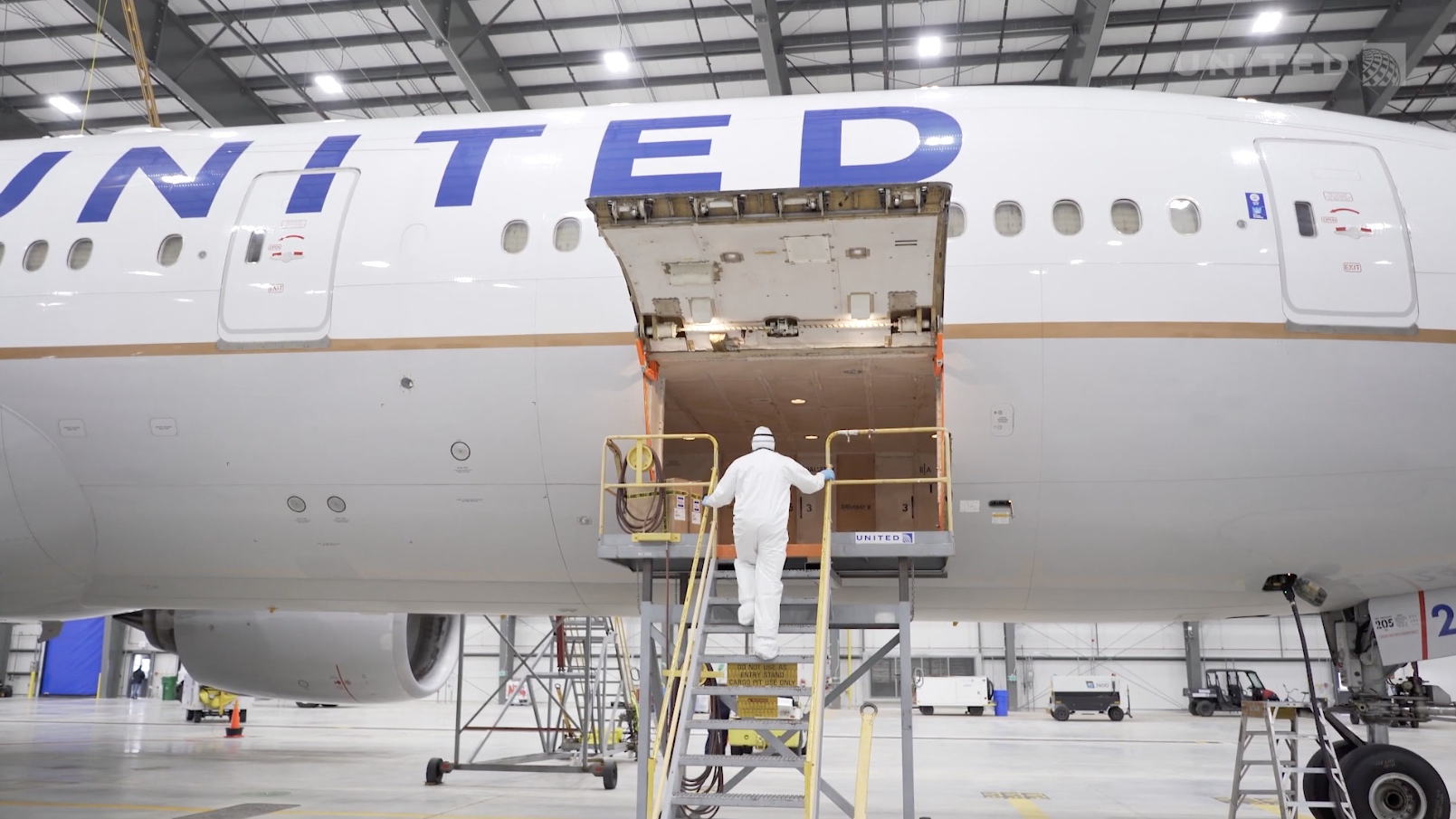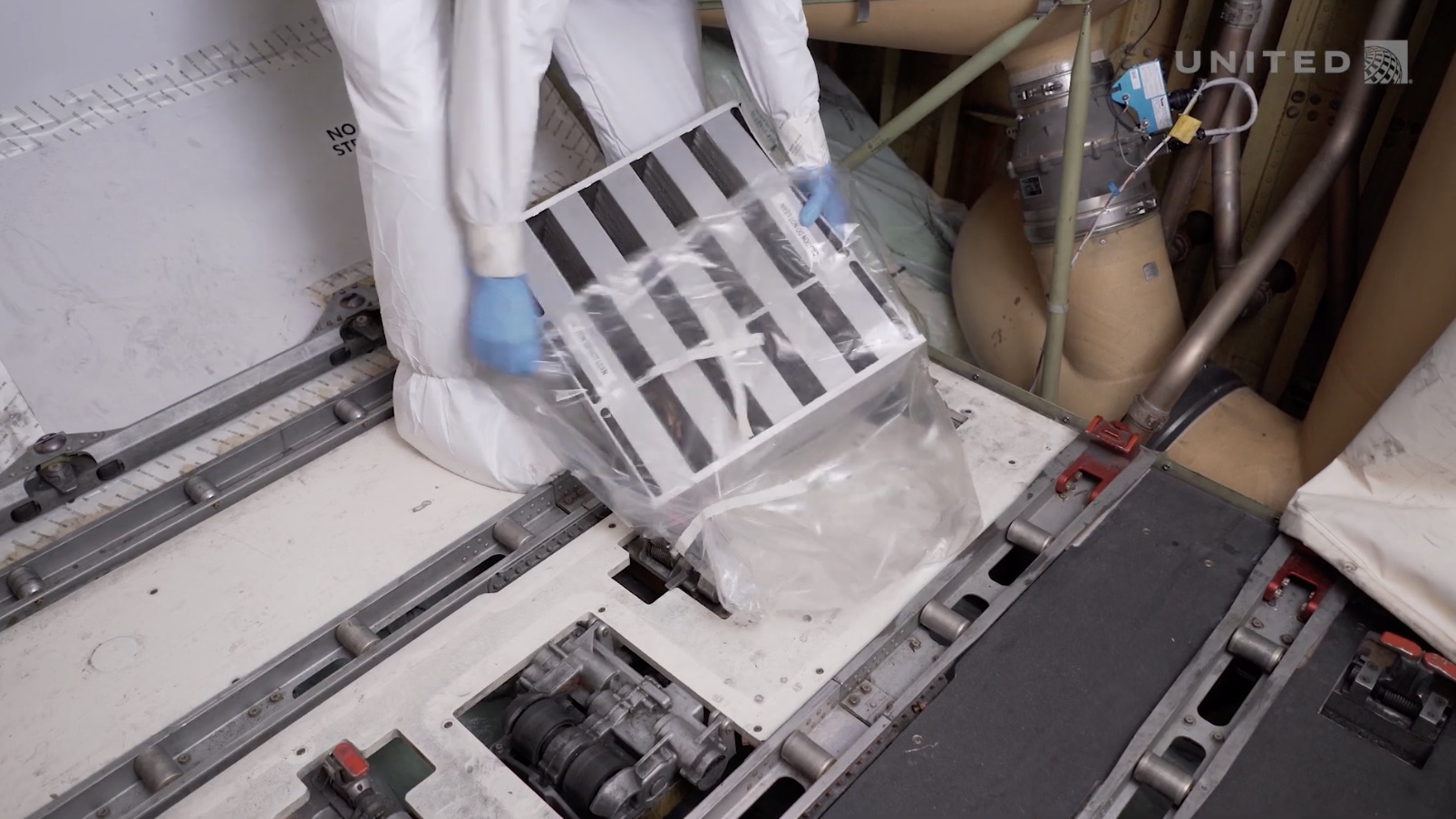
United Airlines claims it will further reduce the spread of COVID-19 by increasing the air flow volume of its HEPA filters.
United Airlines Sees HEPA Filters As Key To Healthy Onboard Environment
United will “maximize air flow volume” on all high-efficiency particulate air (HEPA) filtration systems during the boarding and deplaning process. This will occur only on Mainline flights and go a step beyond the previous protocol of running HEPA filters at full capacity only in-flight.
HEPA filters, in theory, remove 99.7% of particles (including viruses), which make breathing on an aircraft much safer than in a grocery store, restaurant, or school. Aircraft air recirculates every 2-3 minutes completely, with new incoming air 50% HEPA filtered, recirculated air and 50% fresh air from outside. That system combined with fresh air flowing down from the ceiling and being absorbed in side panels helps to keep air from spreading backwards or forwards, which would put more people at risk.
United: HEPA Filters, Not Open Middle Seats
United CEO Scott Kirby continues to insist that the way forward is not by leaving middle seats opens, stating:
“We know the environment on an aircraft is safe and because the air flow is designed to minimize the transmission of disease, the earlier we maximize air flow over our HEPA filtration system, the better for our crew and our customers. The quality of the air, combined with a strict mask policy and regularly disinfected surfaces, are the building blocks towards preventing the spread of COVID-19 on an airplane. We expect that air travel is not likely to get back to normal until we’re closer to a widely administered vaccine – so we’re in this for the long haul. And I am going to keep encouraging our team to explore and implement new ideas, new technologies, new policies and new procedures that better protect our customers and employees.”
Conspicuously missing is any mention of spacing onboard, which may reduce by half the risk of COVID-19. United’s Chief Communications Officer Josh Earnest has dismissed the idea of social distancing on airplanes as a “PR strategy…not a safety strategy.”

CONCLUSION
Frankly, I’m not sure why United did not do this from the start, but the science behind HEPA filters is convincing. United will continue to focus on masks, HEPA filters, and frequent disinfecting of surfaces…not open middle seats.




I too am surprised this wasn’t done from the start. Not sure I would have made a production of an announcement over it! Boarding at the end was the right strategy.
I recently flew both SWA and AA.
SWA had the air on during boarding and deplaning. AA did not.
Spacing may be a limited short term solution but it is not viable for the long term.
There are a couple of problems I see with the spacing study.
One, it is limited. They say you have half the risk if middle seats are blocked. How much is the risk if aisles and middles are blocked – they don’t say but common sense says it is better than half. What if they blocked all the seats? This would clearly be best because now the risk is ZERO! But blocking all the seats would put the airline out of business. Is this a good thing? What is the best ratio of seat blocking versus flight cost viability?
Two, blocking the middles (approximately 1/3 of the seats) would either mean airlines going bankrupt or fares rising by 50% from pre-covid (2 passengers need to cover the revenue for 3 seats). Sure, if you phrase the question, “would you like half the risk of contracting Covid?”, most people would say yes. If you phrase the same issue as, “would you like to pay 50% more for your air travel?”, most people would say no way.